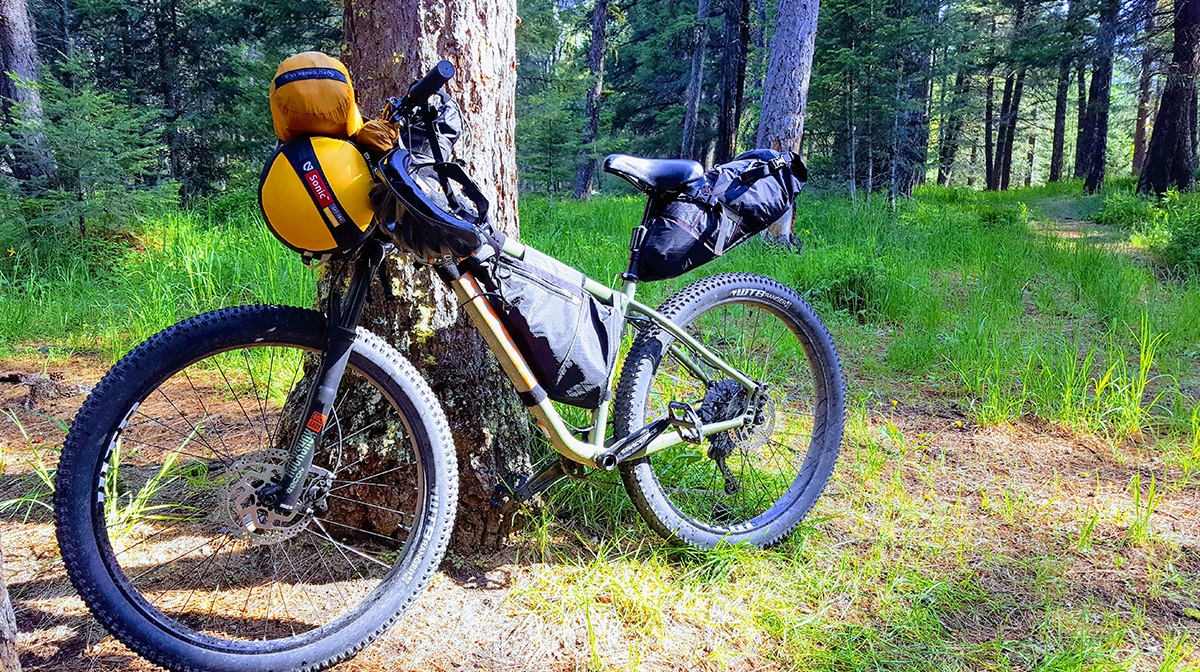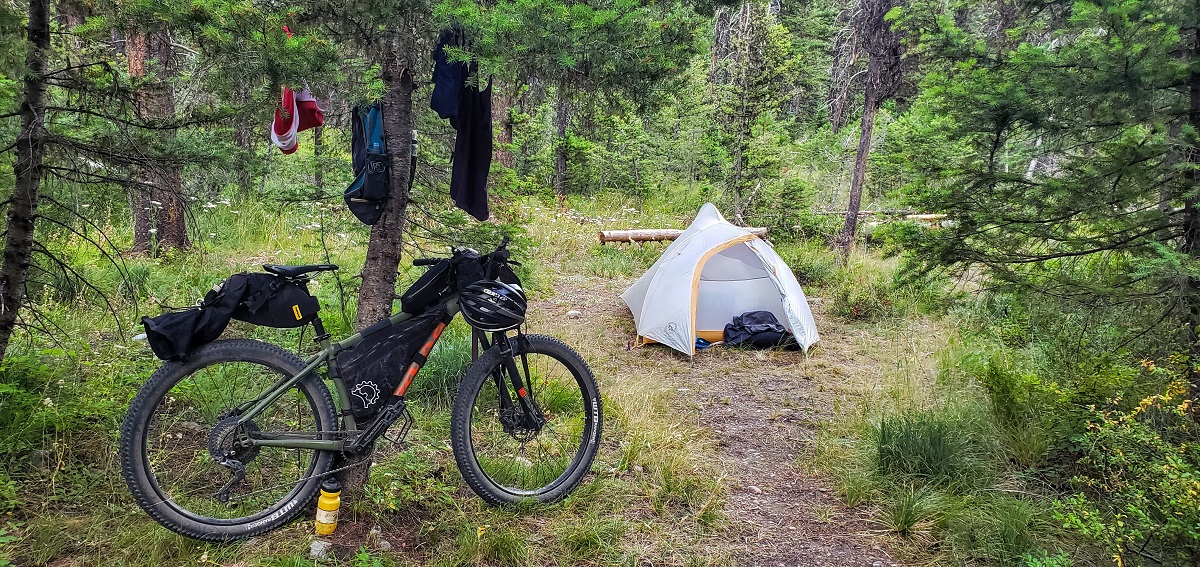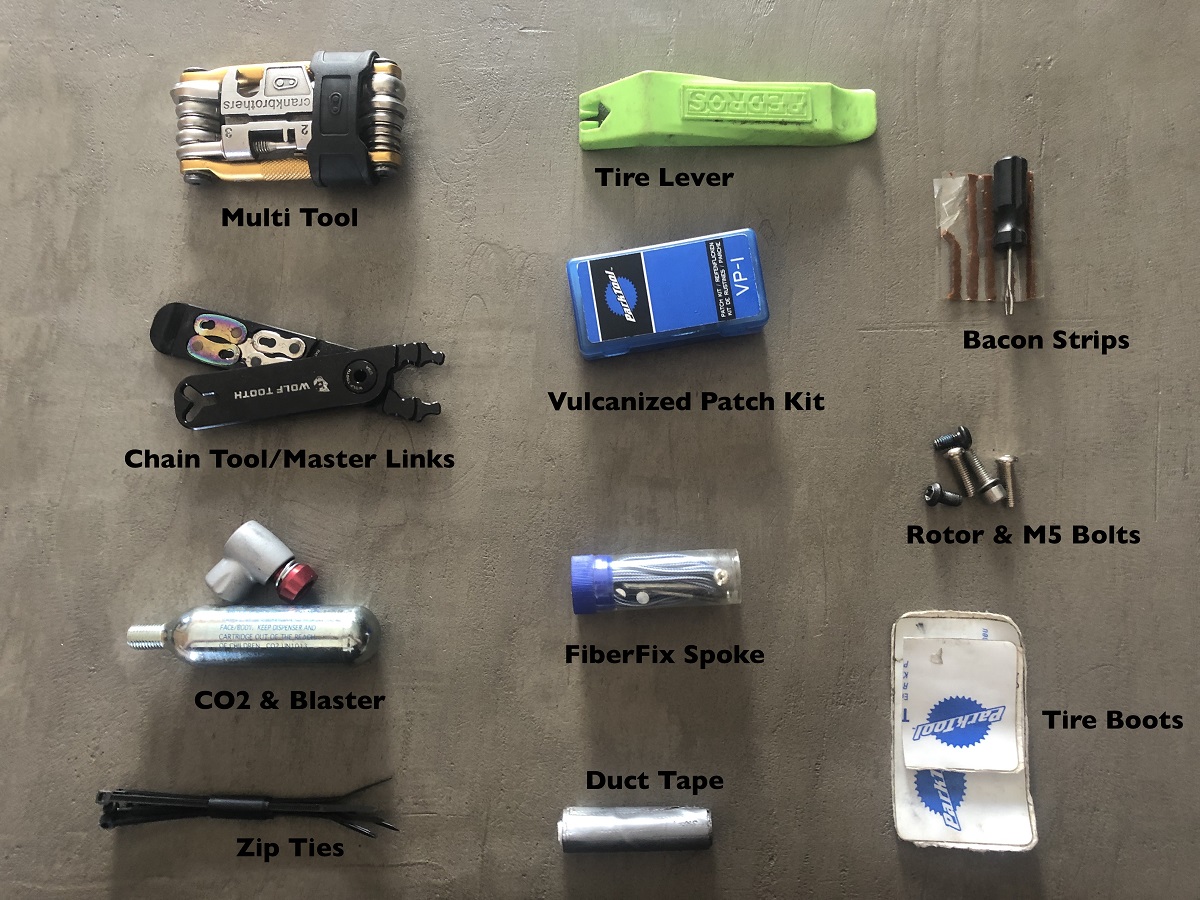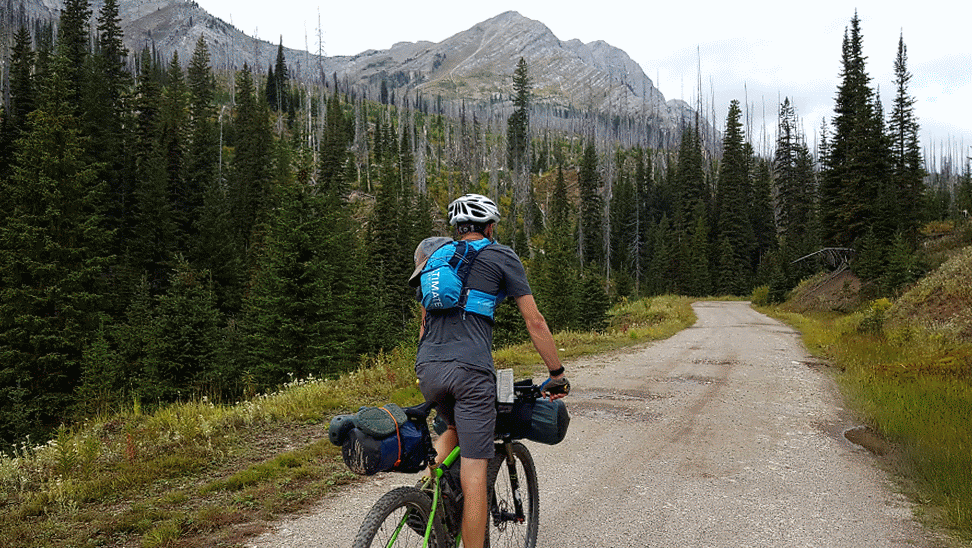Dirt Touring Basics + VIDEO
When their favorite Adventure Cycling course was canceled due to the pandemic, Tour Leaders Joe Riemensnider and Allison Seger did the next best thing and turned the Basics of Dirt Touring into a free online event.
In lieu of camping, cooking, and riding with a small group of eager beginner bikepackers, Joe and Allison provide their most crucial gravel-grinding tips for all who wish to get a little dirty and a little farther out than the paved roads can take us.
1. What is Dirt Touring or Bikepacking?
Whether it’s called gravel or dirt touring or bikepacking, it simply refers to traveling by bike on dirt roads and trails rather than on pavement.
Like backpacking, dirt touring often includes camping because you’re typically riding farther from civilization and from the amenities that towns provide. This also means that dirt touring requires a little more careful planning and consideration to ensure a fun and safe trip. But as Joe and Allison will tell you, the prep is definitely worth the reward of exploring new, off-the-beaten-path places.
2. Packing Your Bags
Regardless of what some bikepackers may tell you, there’s no right or wrong way to dirt tour or bikepack. You can use a combination of panniers, framebags, or a bike trailer. Use whichever method works best for you. Allison has traveled with people who carry their belongings in different ways, and it all works.

That being said, the more technical the trail or rough the dirt road, the more bikepacking-specific bags, like framebags and seatbags, shine. Bikepacking bags are streamlined and carry weight well for more technical terrain. They’re also small and require efficient packing.
Knowing the terrain of your route will help you decide whether bikepacking bags would make your trip easier, but don’t let a lack of gear keep you from exploring.
3. How to Dirt Tour in a Pandemic
While mid-pandemic is not the time to be traveling long distances by bicycle through multiple states, it is possible to go on local bike adventures. Cycling and camping are low-risk outdoor activities. We recommend staying close to home — within one gas tank’s worth of travel — and traveling with people in your household.
Don’t go if you feel sick or have been around someone with COVID symptoms.
While we love supporting our rural communities, now is not the time to visit local mercantiles, breweries, or ice cream shops. Instead, use your non-saddle time to relax at camp or brush up on other hobbies. Allison has been bringing her watercolors to capture the natural beauty of the area she’s in.
Be self-contained if possible, carrying all of your food and water. If you need to stop for groceries, consider curbside pickup or have one member of your group go inside the store. Wear a mask and use hand sanitizer when going indoors for supplies, water, or the bathroom. Get creative and fill your water bottle with the outdoor spigot. Try using the trees as a restroom if you’re in a remote area — it’s surprisingly pleasant and often necessary on bikepacking trips.
4. Planning and Navigating Your Bicycle Route
When planning a dirt tour, Joe recommends that you start with where you want to go and what you want to see. Been hankering to see a particular national park, state park, forest, or rail trail? Go for it! Joe likes to use the following planning tools to see what sorts of routes others have created in his area of interest or what dirt roads and trails he might be able to link together into a route.
Ride with GPS
A web app and mobile app, Ride with GPS is great for road and dirt tours. You can look at routes others have created and made public, or you can plan your own and put the route on your phone for navigation. You can also email any questions to people who have posted their routes.
Bikepacking.com
See Bikepacking.com’s routes section for singletrack, gravel, and road routes. You can also choose routes by length and geographic regions. The descriptions and photos give you an idea of the difficulty of the route, elevation, and where to camp and get groceries.
Bikepacking Roots
Primarily a land advocacy group, Bikepacking Roots also designs routes. Joe is a regional advisor for Bikepacking Roots, and advisors are available to give route recommendations and be a first-hand resource.
Adventure Cycling
While known for its iconic road routes, Adventure Cycling has a few dirt and rail trail routes across the U.S. including the Great Divide Mountain Bike Route, the Arkansas High Country Route, and the Idaho Hot Springs Mountain Bike Route, with maps, an app, and GPX data for each.
While tools like Ride with GPS are great for navigating your route with a device like a smartphone or bike computer, Joe always carries a paper map as a backup. You can often pick up a paper map of nearby areas at Forest Service Ranger Stations and bike shops.
5. What You Need to Know About Camping
There are few rules regarding camping while dirt touring or bikepacking. You can link together dirt roads to disperse camp on Forest Service or BLM land, stay at a developed campground, or even pitch your tent at an RV park for the occasional luxury of a bathroom and shower.
But one big rule for dispersed or backcountry camping is Leave No Trace. Be responsible for yourself and the world. Whatever you pack in, you pack out. Bury your human waste or carry it out if there’s no way to bury it.

Another important requirement for bikepacking is a certain amount of self-sufficiency. Be prepared, bring a first aid kit, and know where you are. Watch for inclement weather so you don’t get stuck in the elements. And always tell someone where you’re going — it’s more important than you can imagine.
Allison admits that camping and riding in bear country can be scary, but you can minimize your risk by following a few rules. Remember, bears are not out to get you.
- Carry bear spray and keep it close by at all times. Be sure you know how to use it properly. You can learn by watching a YouTube video.
- Make noise while traveling so you don’t surprise a bear.
- Camp far from where you cook.
- Hang your food when you camp and designate one bag or pannier for food.
6. What’s for Dinner?
Eat or cook what you like while bikepacking. Some people focus on big, fast calories and eat bars or straight out of the peanut butter jar, and that’s a-okay. Allison, however, is not one of those people. She enjoys cooking up hot meals, and she shares some of her favorite backcountry cooking tips.
When packing for your bikepacking trip, think about nutrition and calories. A good rule of thumb is to double the regular serving size to make up for the calories you’ve burned cycling all day.
Also, think about what will carry and store well. Glass jars are heavy, and some fruits and vegetables won’t last more than a couple of hours in your bag. Allison likes to carry carrots and sweet potatoes, which can last a few days. If you’re traveling with a group, you can split up your cooking equipment and supplies to save on weight.
- Breakfast: Allison likes to make a simple and quick breakfast of oats, peanut butter powder, and dried fruit.
- Lunch: Easily the most difficult meal to pack for, lunch benefits from quick, accessible, yet satisfying foods like cheese, tortillas, and hummus.
- Dinner: Allison cooks something a little fancier for dinner. Sometimes she makes dehydrated meals or lentils, which are filling, nutritious, and don’t take much time to cook.
- Coffee: Allison’s all-important beverage. While instant coffee tastes great in camp, she has also made pour-over coffee on tour. Do whatever makes you happy!
7. The Mechanics of Being Your Own Mechanic
Road cyclists are used to having a bike shop every so often, but being far from civilization means being far from bike shops too. It’s good to be prepared and develop a few skills so that you can be your own bike mechanic in a pinch.
First, you’ll need tools to repair the common offenders of a breakdown. Joe’s tool kit is the size of a burrito, and it has everything he needs to fix his bike.

Before heading into remote areas, take time to learn how to change a tire and understand your derailer. Joe has recommendations on the best places to gain the skills you need.
- Sheldon Brown. It’s an old-school website with a wealth of great information about everything bicycles. Its information is so good that bike shops often use its repairs as industry standards.
- Park Tool’s website is newer and has a search tool to help you find what you need, including lots of great videos.
- Adventure Cycling has its own list of common touring mechanical problems and bicycle repairs.
These resources aren’t too helpful when you’re in the backcountry without cell service, so practice before you go and develop a basic understanding of how your trusty steed works!


